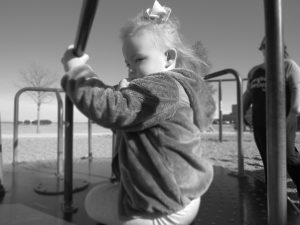
Category Archives: Uncategorized
practice lighting
practice joiner

vidoe questions
How should the photographer shoot this series of images? be stationary
How do joiners give the illusion of time and space? people move
How is physically arranging the photographs like arranging the photographs in Photo Shop? move the picture on top of it or under it.
What are some pros and cons of Photo Shop joiners vs. physically printing and joining the images? you cant put it like how you want it it does it for you sometimes and you cant turn it where you like it.
Do you prefer the very ‘organized and exact’ style or more ‘broken up’ style of joiner? Why? organized because you know what goes where.
final collage

5 edits





26.4 list
Collage practice

Influential Photos
 Working as an investigative photographer for the National Child Labor Committee, Lewis Hine believed that images of child labor would force citizens to demand change. The muckraker conned his way into mills and factories from Massachusetts to South Carolina by posing as a Bible seller, insurance agent or industrial photographer in order to tell the plight of nearly 2 million children. Carting around a large-format camera and jotting down information in a hidden notebook, Hine recorded children laboring in meatpacking houses, coal mines and canneries, and in November 1908 he came upon Sadie Pfeifer, who embodied the world he exposed. A 48-inch-tall wisp of a girl, she was “one of the many small children at work” manning a gargantuan cotton-spinning machine in Lancaster, S.C. Since Hine often had to lie to get his shots, he made “double-sure that my photo data was 100% pure—no retouching or fakery of any kind.” His images of children as young as 8 dwarfed by the cogs of a cold, mechanized universe squarely set the horrors of child labor before the public, leading to regulatory legislation and cutting the number of child laborers nearly in half from 1910 to 1920. it impacted the world by stopping child labor. i do not like it because their making little children work. it depends on the on the person on how the emotions will come out. to me i feel sad because their makeing children work instead of making the parents work. the photographer is trying to stop child labor because their missing out on alot of stuff. the intriguing thing that stands out is the little girl jus staring at the cotton mill.
Working as an investigative photographer for the National Child Labor Committee, Lewis Hine believed that images of child labor would force citizens to demand change. The muckraker conned his way into mills and factories from Massachusetts to South Carolina by posing as a Bible seller, insurance agent or industrial photographer in order to tell the plight of nearly 2 million children. Carting around a large-format camera and jotting down information in a hidden notebook, Hine recorded children laboring in meatpacking houses, coal mines and canneries, and in November 1908 he came upon Sadie Pfeifer, who embodied the world he exposed. A 48-inch-tall wisp of a girl, she was “one of the many small children at work” manning a gargantuan cotton-spinning machine in Lancaster, S.C. Since Hine often had to lie to get his shots, he made “double-sure that my photo data was 100% pure—no retouching or fakery of any kind.” His images of children as young as 8 dwarfed by the cogs of a cold, mechanized universe squarely set the horrors of child labor before the public, leading to regulatory legislation and cutting the number of child laborers nearly in half from 1910 to 1920. it impacted the world by stopping child labor. i do not like it because their making little children work. it depends on the on the person on how the emotions will come out. to me i feel sad because their makeing children work instead of making the parents work. the photographer is trying to stop child labor because their missing out on alot of stuff. the intriguing thing that stands out is the little girl jus staring at the cotton mill.
 People simply could not get enough of Jacqueline Kennedy Onassis, the beautiful young widow of the slain President who married a fabulously wealthy Greek shipping tycoon. She was a public figure with a tightly guarded private life, which made her a prime target for the photographers who followed wherever she went. And none was as devoted to capturing the former First Lady as Ron Galella. One of the original freewheeling celebrity shooters, Galella created the model for today’s paparazzi with a follow-and-ambush style that ensnared everyone from Michael Jackson and Sophia Loren to Marlon Brando, who so resented Galella’s attention that he knocked out five of the photographer’s teeth. But Galella’s favorite subject was Jackie O., whom he shot to the point of obsession. It was Galella’s relentless fixation that led him to hop in a taxi and trail Onassis after he spotted her on New York City’s Upper East Side in October 1971. The driver honked his horn, and Galella clicked his shutter just as Onassis turned to look in his direction. “I don’t think she knew it was me,” he recalled. “That’s why she smiled a little.” The picture, which Galella proudly called “my Mona Lisa,” exudes the unguarded spontaneity that marks a great celebrity photo. “It was the iconic photograph of the American celebrity aristocracy, and it created a genre,” says the writer Michael Gross. The image also tested the blurry line between newsgathering and a public figure’s personal rights. Jackie, who resented the constant attention, twice dragged Galella to court and eventually got him banned from photographing her family. No shortage of others followed in his wake.she had a private life to most people. i like this picture because Jackie has always been very pretty and an inspiring person. its good emotion coming out of me because she makes me feel good. the photographer is trying to show her beauty and her confindence in things. the intriguing part of this pitcure ia the way she looked.
People simply could not get enough of Jacqueline Kennedy Onassis, the beautiful young widow of the slain President who married a fabulously wealthy Greek shipping tycoon. She was a public figure with a tightly guarded private life, which made her a prime target for the photographers who followed wherever she went. And none was as devoted to capturing the former First Lady as Ron Galella. One of the original freewheeling celebrity shooters, Galella created the model for today’s paparazzi with a follow-and-ambush style that ensnared everyone from Michael Jackson and Sophia Loren to Marlon Brando, who so resented Galella’s attention that he knocked out five of the photographer’s teeth. But Galella’s favorite subject was Jackie O., whom he shot to the point of obsession. It was Galella’s relentless fixation that led him to hop in a taxi and trail Onassis after he spotted her on New York City’s Upper East Side in October 1971. The driver honked his horn, and Galella clicked his shutter just as Onassis turned to look in his direction. “I don’t think she knew it was me,” he recalled. “That’s why she smiled a little.” The picture, which Galella proudly called “my Mona Lisa,” exudes the unguarded spontaneity that marks a great celebrity photo. “It was the iconic photograph of the American celebrity aristocracy, and it created a genre,” says the writer Michael Gross. The image also tested the blurry line between newsgathering and a public figure’s personal rights. Jackie, who resented the constant attention, twice dragged Galella to court and eventually got him banned from photographing her family. No shortage of others followed in his wake.she had a private life to most people. i like this picture because Jackie has always been very pretty and an inspiring person. its good emotion coming out of me because she makes me feel good. the photographer is trying to show her beauty and her confindence in things. the intriguing part of this pitcure ia the way she looked.  So much of great photography is being in the right spot at the right moment. That was what it was like for sports illustrated photographer Neil Leifer when he shot perhaps the greatest sports photo of the century. “I was obviously in the right seat, but what matters is I didn’t miss,” he later said. Leifer had taken that ringside spot in Lewiston, Maine, on May 25, 1965, as 23-year-old heavyweight boxing champion Muhammad Ali squared off against 34-year-old Sonny Liston, the man he’d snatched the title from the previous year. One minute and 44 seconds into the first round, Ali’s right fist connected with Liston’s chin and Liston went down. Leifer snapped the photo of the champ towering over his vanquished opponent and taunting him, “Get up and fight, sucker!” Powerful overhead lights and thick clouds of cigar smoke had turned the ring into the perfect studio, and Leifer took full advantage. His perfectly composed image captures Ali radiating the strength and poetic brashness that made him the nation’s most beloved and reviled athlete, at a moment when sports, politics and popular culture were being squarely battered in the tumult of the ’60s.this impacted the world by never giving up. i like this pitcure because it shoes him not giving up and fighting for the big prize and doing something he loves. it shows good emotions. the photographer is trying show nothing is impossible and not giving up. the intriguing thing is him standing in that position.
So much of great photography is being in the right spot at the right moment. That was what it was like for sports illustrated photographer Neil Leifer when he shot perhaps the greatest sports photo of the century. “I was obviously in the right seat, but what matters is I didn’t miss,” he later said. Leifer had taken that ringside spot in Lewiston, Maine, on May 25, 1965, as 23-year-old heavyweight boxing champion Muhammad Ali squared off against 34-year-old Sonny Liston, the man he’d snatched the title from the previous year. One minute and 44 seconds into the first round, Ali’s right fist connected with Liston’s chin and Liston went down. Leifer snapped the photo of the champ towering over his vanquished opponent and taunting him, “Get up and fight, sucker!” Powerful overhead lights and thick clouds of cigar smoke had turned the ring into the perfect studio, and Leifer took full advantage. His perfectly composed image captures Ali radiating the strength and poetic brashness that made him the nation’s most beloved and reviled athlete, at a moment when sports, politics and popular culture were being squarely battered in the tumult of the ’60s.this impacted the world by never giving up. i like this pitcure because it shoes him not giving up and fighting for the big prize and doing something he loves. it shows good emotions. the photographer is trying show nothing is impossible and not giving up. the intriguing thing is him standing in that position.
blur effects



